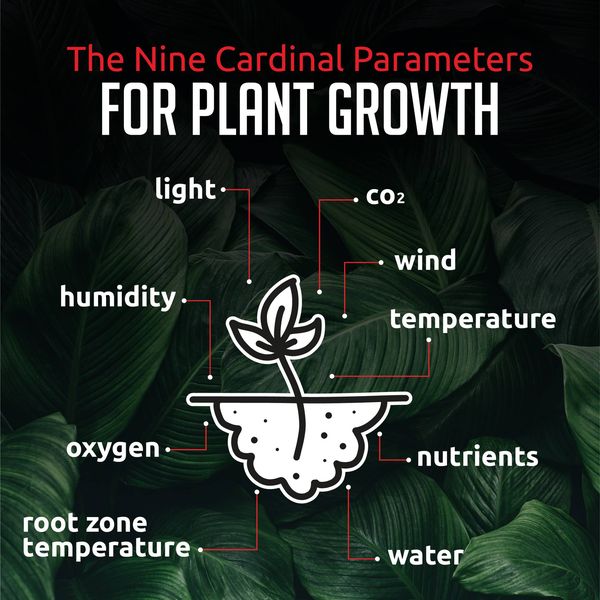The Impact of Spectral Light Quality on Plant Growth


October 8, 2024
Before selecting the right LED grow light, it’s essential to understand what your plants require from their lighting. Unlike traditional room lighting for humans, grow lights need to produce photons—energy that plants use for development and growth.
Your primary focus should be on photosynthetically active radiation (PAR), which encompasses the wavelengths of light from 400 to 700 nanometers (nm) that drive photosynthesis. PAR is not a measurement but rather the spectrum of light necessary for plants to convert light energy into chemical energy. Through photosynthesis, plants transform water, carbon dioxide, and minerals into oxygen and energy-rich organic compounds, using the entire PAR spectrum at different growth stages.
Plants have evolved over millennia under the full spectrum of sunlight, adapting to utilize it effectively while also developing defenses against harmful radiation.
For optimal growth, full spectrum LED grow lights are recommended, particularly those that increase photon output in the 400-500 nm (blue) and 600-700 nm (red) ranges:

Light is the most critical factor affecting plant growth, influencing the other eight parameters essential for optimal development. By manipulating light spectral quality, growers can better optimize these parameters, leading to healthier and more productive plants.
For a comprehensive understanding, we recommend exploring resources like “Growing with Green Light” by Dr. Eric Runkle, which delves deeper into the role of light in plant health and growth.
While light is a crucial factor in achieving optimal yields, flavor, and overall plant health, it alone isn’t sufficient. A holistic approach that balances all growth parameters is essential. Quality full spectrum LED lighting can significantly enhance photosynthesis, leading to improved yields and plant quality. Today’s advanced LED grow lights are designed to meet the specific lighting needs of indoor horticulture.
For further insights, we recommend watching “Maximizing Yields with Dr. Bruce Bugbee” on YouTube.
Recent years have seen remarkable advancements in LED technology, transforming them into highly efficient light sources. LEDs work by passing an electrical current through a semiconductor, causing electrons to recombine and release energy as photons. Similar to the technology behind computer chips, LEDs have significantly improved in efficiency for lighting applications.
In 2017, Samsung made a groundbreaking advancement with their release of the 301B mid-power LED, which allowed for a more effective production of luminous flux across the full light spectrum. Luminous flux measures the total amount of visible light emitted by a source in all directions.
Before this breakthrough, manufacturers could only achieve sufficient light in key energy ranges—blue and red—by combining diodes to create what are often referred to as “blurple” lights. While these lights were functional, they fell short compared to high-pressure sodium (HPS) lights, which had long been the industry standard for indoor growing.
Today, LED technology allows growers to optimize the light spectrum for different plant stages, from vegetative growth to flowering. This optimization maximizes growth rates, reduces transition times, and boosts overall yields. Research has shown that all wavelengths within the PAR range (400-700 nm) can support plant growth, but blue and red light significantly enhance photosynthesis.
A common misconception is that plants do not utilize green light effectively. Some LED manufacturers may emphasize specific growth spectra by referencing the McCree curve, which details chlorophyll absorption. They may claim that because plants appear green, they reflect this light rather than absorb it for photosynthesis. However, plants utilize a range of pigments and photoreceptors across the PAR spectrum.
When selecting an LED grow light, ensure it offers a full spectrum conducive to photosynthesis. Be wary of manufacturers that promote specialized spectra; ask for their PAR measurements, including PPF (photosynthetic photon flux), PPFD (photosynthetic photon flux density), and PPF efficacy (photosynthetic photon flux efficacy). We’ll dive deeper into these metrics in our upcoming article, “Measuring Performance of Horticultural Lighting Systems.”